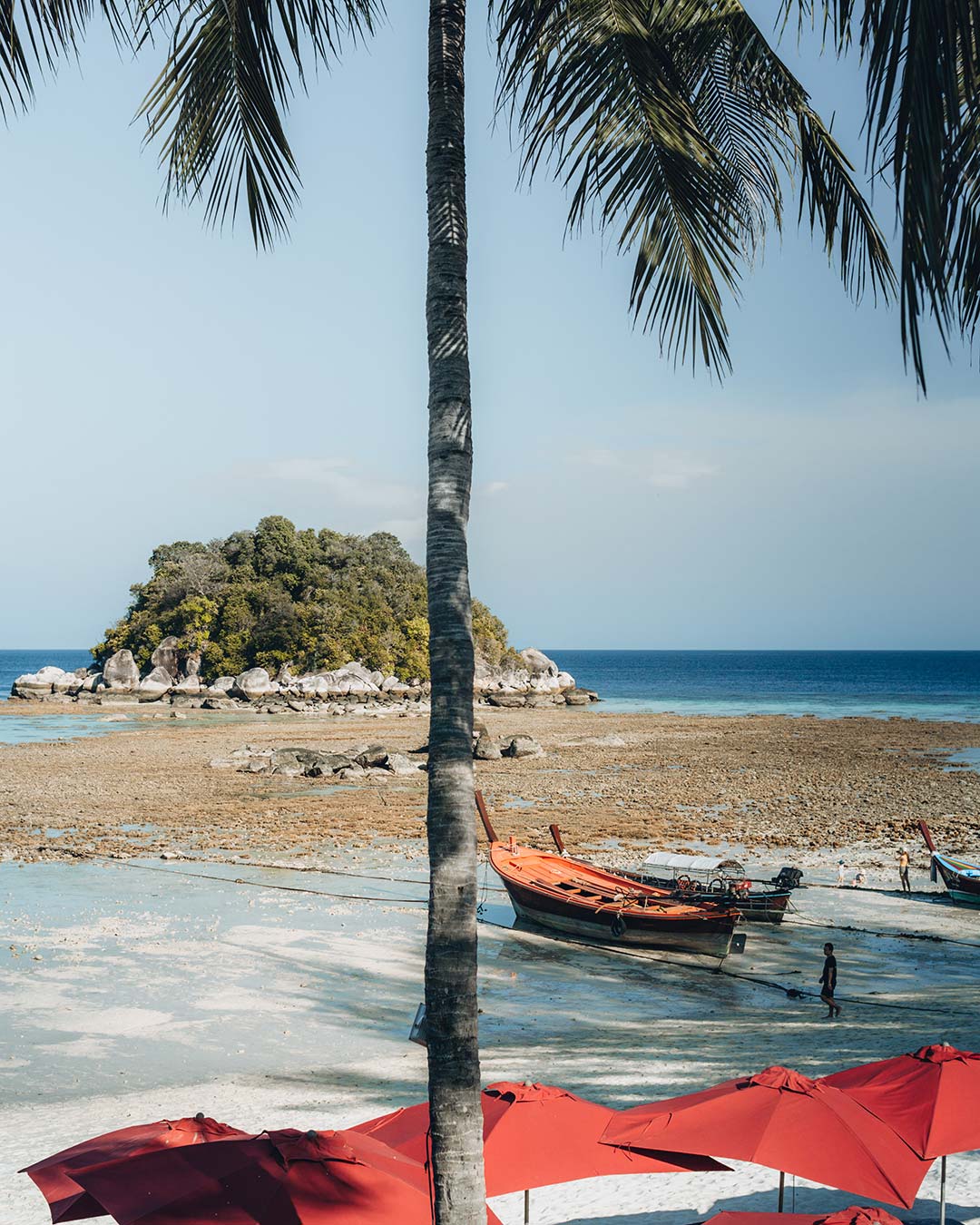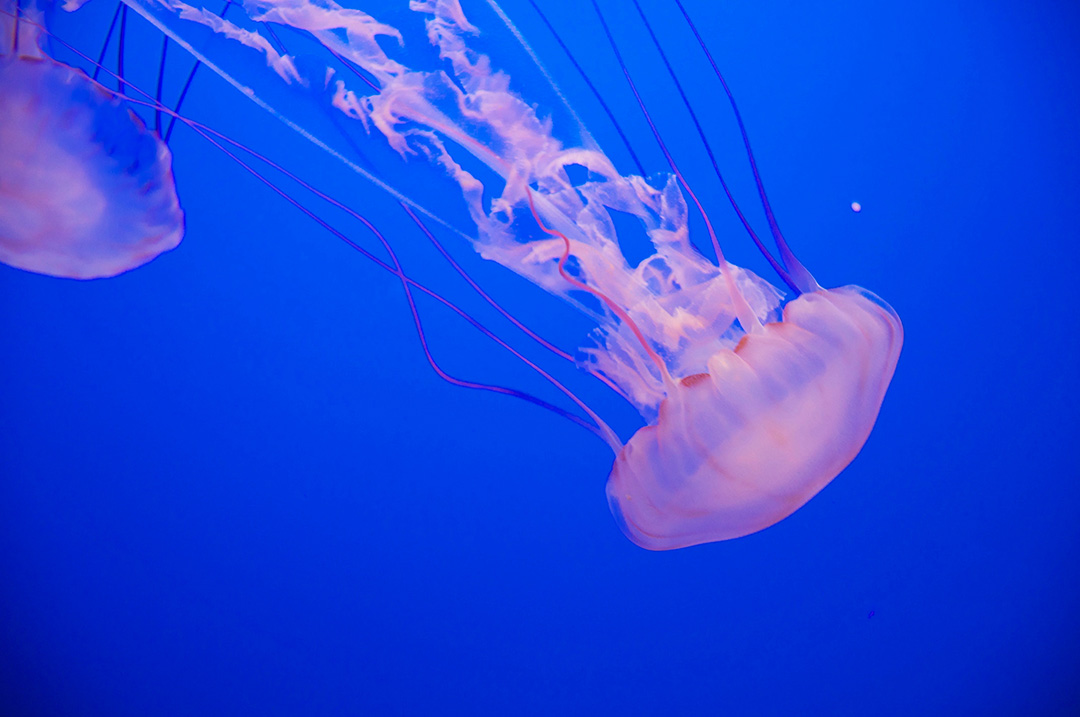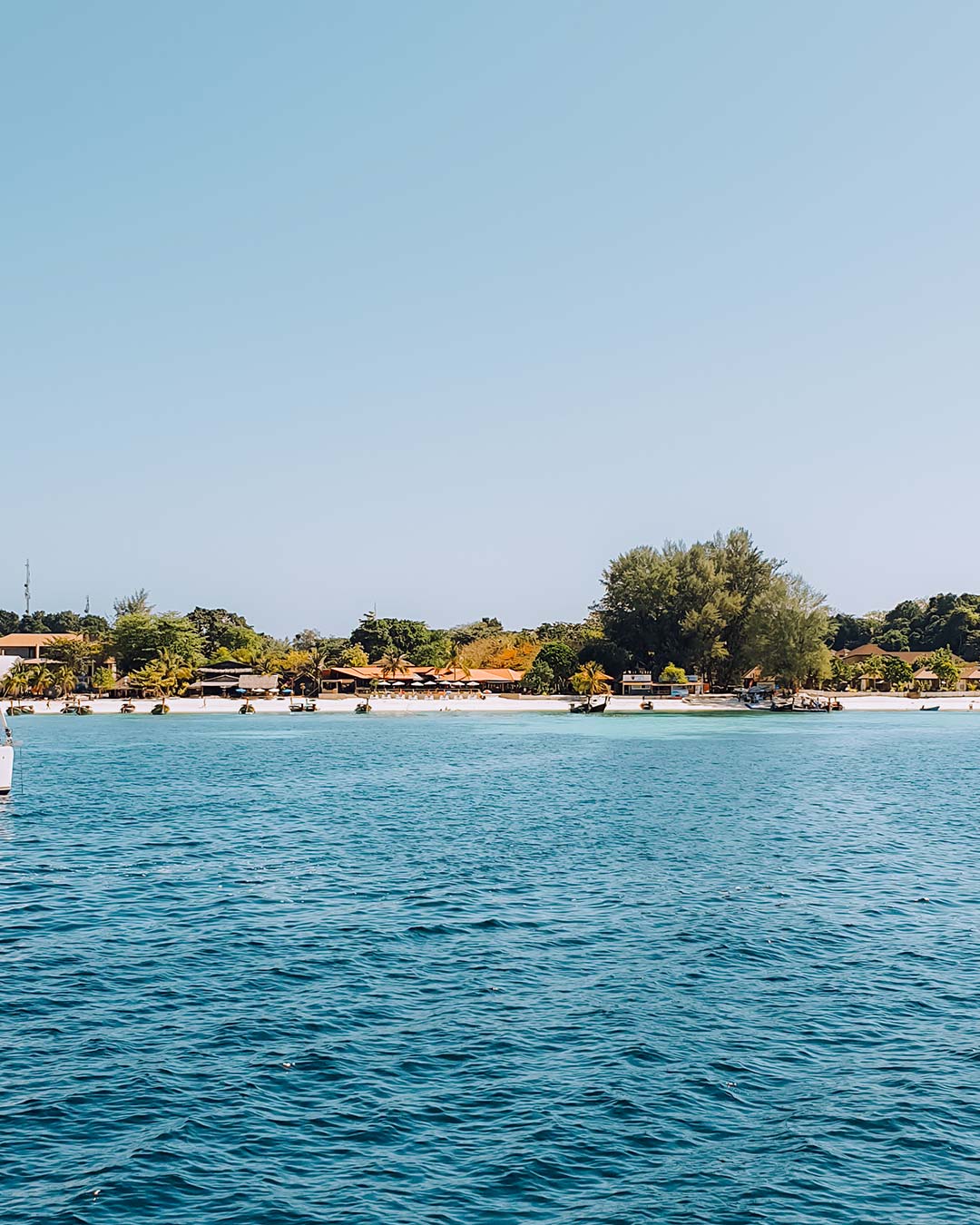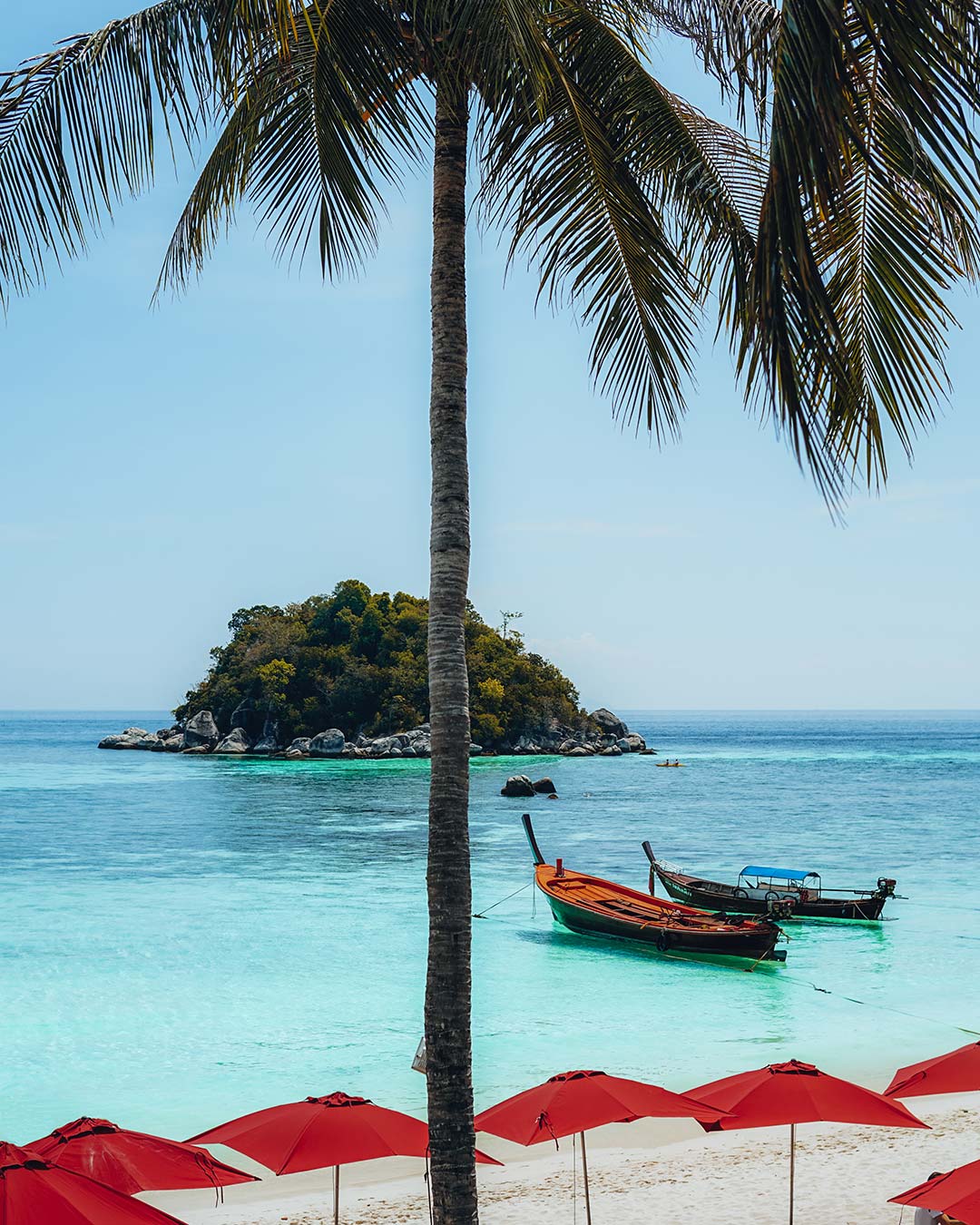As experienced travelers to Thailand’s islands over the past decade, both together and separately, we never thought twice about booking snorkeling trips or island hopping adventures. However, during our most recent trip to Koh Lipe, we were alarmed by the changes we witnessed. The state of the coral was heartbreaking, and we couldn’t ignore the impact of overtourism, climate change, Koh Lipe jellyfish, tides, and the potential need for medical care on the longtail boats. We want to spread awareness based on our observations, experiences, and research to help others make more informed decisions.
In this blog post, we’ll share our top 5 things we wished we knew before island hopping and snorkeling in Thailand, along with tips and suggestions on how to make the most of your trip. Join us as we delve into important insights on Island Hopping Thailand, Tips for Island hopping in Thailand, and Thailand Travel Tips.

1. Tips for Island hopping in Thailand: The suffering Coral Reef
As we went island hopping and snorkeling in southern Thailand, we were struck by how much had changed. Six years prior, the waters around Phuket were pristine. This time, the coral was damaged or dying. Even the best spots were a shadow of their former selves. It’s clear that overtourism is harming marine life in Thailand’s islands.
We did a bit of quick research after the snorkel trip. We found that over the past decade, the total area in Thailand experiencing coral reef damage has increased from 30% to 77%! The research is from marine ecologist Asst Prof Thon Thamrongnawasawat. We sourced it from an article in the Bangkok Post.
How to Help: Be Aware of the Issues and Education Ourselves
We all love snorkeling (and diving) and honestly will find it incredibly difficult to just stop. So we thought the best way is to try to educate ourselves on how we can prevent further harm. Many types of coral die quickly after being stepped on, touched or even grazed. So be really careful when snorkeling, swimming or kayaking. Try your best not to step on them or ram your kayak over them and never break off coral as a souvenir.
How to Help: Reef-Friendly Sunscreen
We’re also going to look into what sunscreen (and other products) we use and how it can affect marine life. According to a study, an estimated 14,000 tons of sunscreen ended up in the world’s coral reefs in 2015 (source).
Click here* for a list of reef-friendly sunscreen that we love, from vegan and natural, to budget-friendly buys. Let us know if you’ve tried any or have any you recommend!
And we’ll try our best to spread awareness to others. If you see someone stepping on coral, instead of staring in disdain, disbelief, or yelling at them to ‘get off the coral’, try to take some time to explain and educate them on why they shouldn’t be doing it. We really believe that it’s not that people want to cause damage, it’s more likely that they didn’t know.
2. Thailand Travel Tips: Rubbish
Rubbish in the water and on beaches is an unexpected reality when visiting Thailand’s beautiful islands. It’s heartbreaking to see the impact of overtourism and lack of sustainable waste management practices.
From the same article in the Bangkok Post, A non-profit marine conservation group, Ocean Conservancy has ranked Thailand as the “fourth in the world among countries which produce the most amount of marine waste” (see full article here). And the International Union for Conservation of Nature IUCN stated that plastic waste as a cause for coral diseases.
How to Help: Trash Clean Up
When we visited Koh Lipe 3 years ago, rubbished washed up on shore every single morning. A lot of rubbish. We worked with the ad-hoc trash clean up group every morning during that trip to clean up the beach, rounding up bags and bags of plastic, glass, wood, foliage and other unidentifiable stuff. Three years later, we found Koh Lipe to be much cleaner thanks to the efforts of Trash Hero, whose mission is to “create sustainable, community-based projects that remove existing waste, and reduce future waste by inspiring long-term behavior change.” Yay! They arrange a weekly clean up on Koh Lipe every Monday at 10am. All you have to do is show up. Find out more about Trash Hero here. The great news is that there was so much less trash around Koh Lipe compared to 3 years ago. Way to go Trash Hero!
We can also look to pick up trash anywhere, anytime. Picking up other people’s trash may seem gross in the beginning, but after a while, you’ll get used to it and you just feel good helping to make the world just a little bit cleaner and environmentally happier.
How to Help: Be Aware of the Issues and Education Ourselves
We, as travelers, should try to do as much as we can to not only spread awareness and education but to also be conscious of how much effect we have on the environment. We know accidents happen. Like this scenario: you’re on a boat and you have to get your sunscreen. You open your backpack and the empty water bottle that you kept to throw away at the resort flies out and lands in the water. It’s happened to all of us. Think about these things as well, the accidental ways we add to the pollution in the ocean.
3. Island Hopping Thailand: Koh Lipe Jellyfish!
We wish we knew about Koh Lipe jellyfish, or jellyfish in Thai waters, before island hopping and snorkeling in southern Thailand. Jellyfish were rare in the past, but now warmer water temperatures have led to more jellyfish. We didn’t know about jellyfish stings and didn’t expect to encounter them. However, one of us was stung within 10 minutes of snorkeling. We saw three more jellies in that area too. This happened during the dry season, which contradicts the common belief that Koh Lipe jellyfish only appear during the wet season.
Photo by Matt Briney on Unsplash
When we booked the boat, there was no mention of caution on the jellyfish, so, here’s what you need to know about jellyfish in Thai waters (especially jellyfish Koh Lipe!):
Over the past few years, more jellyfish have been around the islands of Thailand and Malaysia due to warmer water temperatures. This has led to reported warnings of a massive ‘jellyfish invasion’ along the coast of Sabah, Malaysia from March to June 2019. We were saddened by this news.
Jellyfish include the ‘less venomous’ jellyfish (we haven’t found the name of them, but it’s the one that stung one of us), box jellyfish and the Portuguese Man-o-war! We had no idea that the not only were the box jellyfish found in these waters but apparently, its’ venom is the deadliest in the world! The ‘less venomous’ jellies can go up to 1 foot in diameter and have long tentacles and has a sting that burns pretty badly for the first few hours up to a day. After that, there wasn’t any pain but a pretty bad rash and skin discoloration lasting about 2 weeks. The sting of the box jellyfish can be deadly so be sure to read up about jellyfish if you do plan to snorkel and swim in jellyfish prone waters.
Top tips for avoiding (or dealing with) jellies:
Definitely read up about Koh Lipe jellyfish or jellyfish in general, where they are and ask if there have been any sightings of the box jellyfish around the waters.
Some beaches may have stinger nets. If the stinger nets are up, stay within the boundaries and don’t sit on the edge of the nets.
Take vinegar with you on the boat, on the beach, everywhere by the water as a precaution. Though, to be honest, from what we’ve read, if you get stung by a box jellyfish, you need immediate emergency medical attention.
If you’re snorkeling with kids and worry about jellyfish (or if you just worry about jellyfish in general), you can look into getting stinger suits. We also recently came across this Safe Sea Jellyfish Sting-Blocking Sunscreen for Kids* that is reef-safe sunscreen to help guard against jellyfish stings, sea lice, swimmers itch and UV radiation. Though it says ‘for Kids’, we will definitely be trying it for our next island trip in the tropics. It is If you try it, let us know how it works for you.
And make sure you always get travel insurance!
…which leads us to the next thing: Medical needs on the longtail boats
4. Tips for Island hopping in Thailand: Medical needs on the Longtail boats
We learned about Koh Lipe jellyfish the hard way when one of us got stung, and the language barrier made it difficult to communicate with the boat operator. Fortunately, one of us had phone service to google for information.
Boat operators are accommodating but don’t understand English well. Communication in medical emergencies can be challenging.
There didn’t seem to be a medical kit on board. Pouring vinegar on a jellyfish sting as soon as possible is recommended, but it wasn’t available on the boat.
Top tips to prepare for an emergency on a longtail boat:
Bring a basic medical kit and a small bottle of vinegar with you when you go island hopping. Check here* for the best travel medical kit we have come across so far and here* for the runner up.
Have the resort write out emergency phrases for you, should you need to show it to your boat operator and English isn’t working. Make sure one of the questions to write out is “Can I please use your phone, I think this is a medical emergency!”
Find out from the resort how far the islands and snorkel sites are and know how long it would take to get back to shore.
Take down the number of the infirmary of the resort, so you can call them should something happen.
Request resort to tell boat operator about emergency contact & phone usage. Check if the mobile works at sea. Borrow boat phone if not.
Best Travel First Aid Kits :
5. Island Hopping Thailand: The Tides
And while we’re talking about staying safe, the undertow is quite strong around some of the islands in Thailand. We’ve seen it in Phuket, and again in Koh Lipe. The tide goes out really quite quickly leaving a large expanse of sand and exposed coral.
We were kayaking as the tide was going out, and had to detour to pull a swimmer back to shore. He told us he easily swam out, but when he wanted to get back to shore, he was “swimming in place’ for about 30 minutes, so decided to stop and wait to see if he could hitch a ride back instead.
How to Help: Be Aware of the Issues and Education Ourselves
If you snorkel or kayak, take note of low tide times so you can be back without hurting the coral well before the tide is completely out.
And if you go swimming, best to be aware of the tide times so you can be prepared for how far to swim out.
They will place tide and riptide warnings on some beaches in Thailand so keep an eye out for the flag warnings before heading out for a swim.
This blog turned out a lot longer than we first anticipated. Initially, we wanted to share 5 things we wished we knew. But also wanted to educate and share research. It’s based on our experience and opinions. We hope it’s helpful and we welcome tips and information.
Wishing you safe and happy-reef snorkel sessions,
Sue & Renesh
* Disclaimer: As an Amazon Associate I earn from qualifying purchases. Some links included in this description are affiliate links. If you purchase a product or service with the links that I provide I may receive a small commission. There is no additional charge to you! Thank you for supporting my blog so I can continue to provide you with free more each week!
WHERE TO STAY IN KOH LIPE
Idyllic Concept Resort is a boutique resort located on Sunrise Beach overlooking the turquoise waters of the Andaman Sea with a chilled quiet vibe and the stunning sunrise views. Check the latest prices for The Idyllic Concept Resort here.
MORE OF THAILAND
KOH LIPE TRAVEL INFORMATION FOR FIRST-TIMERS
IDYLLIC CONCEPT RESORT IN KOH LIPE, THAILAND
20 THINGS WE WISH WE KNEW BEFORE TRAVELING TO BANGKOK












Yes. Everyone should really learn these things before island hopping, snorkeling, diving, or having any activities like this. We should all be aware of this reality and help to preserve the beauty of our mother nature.